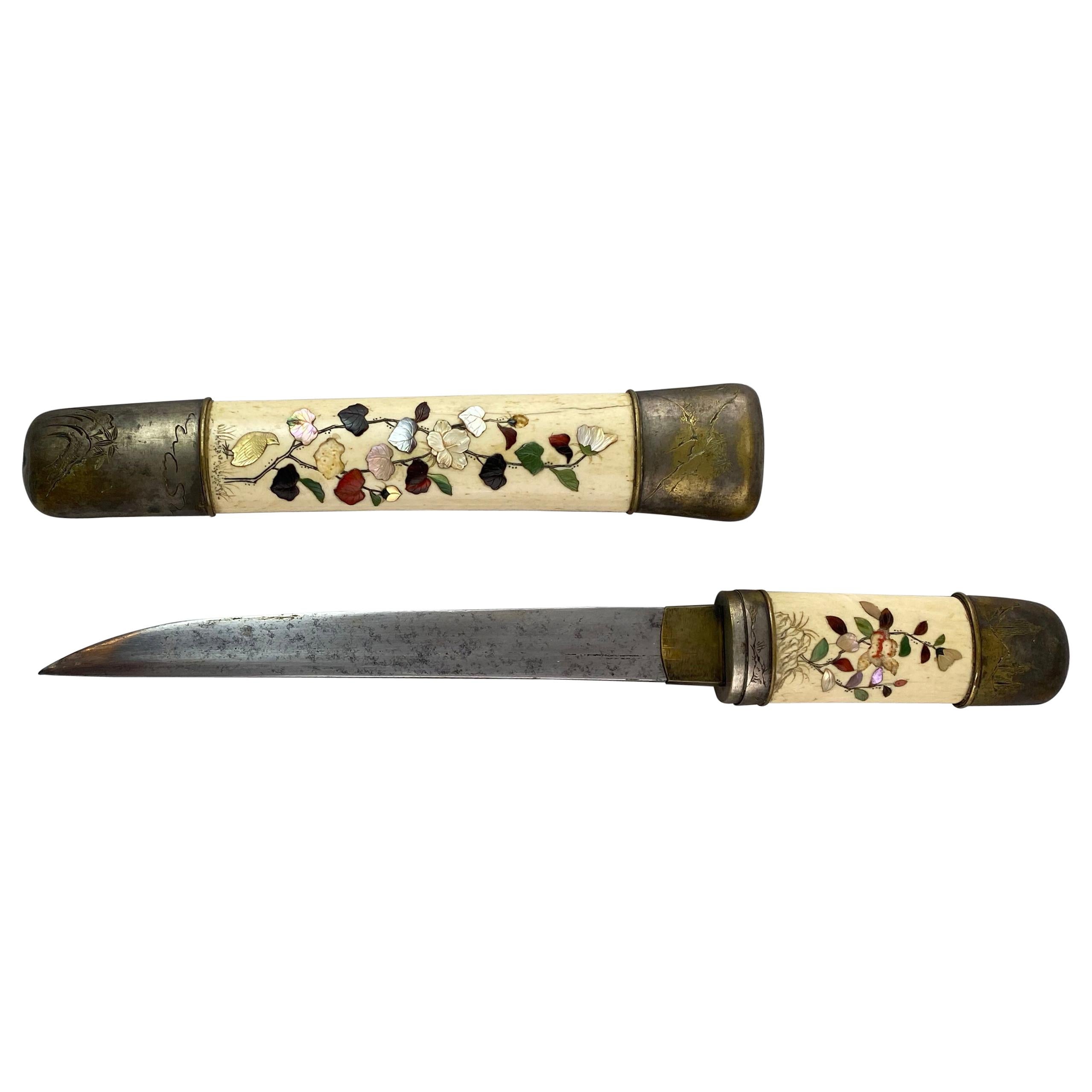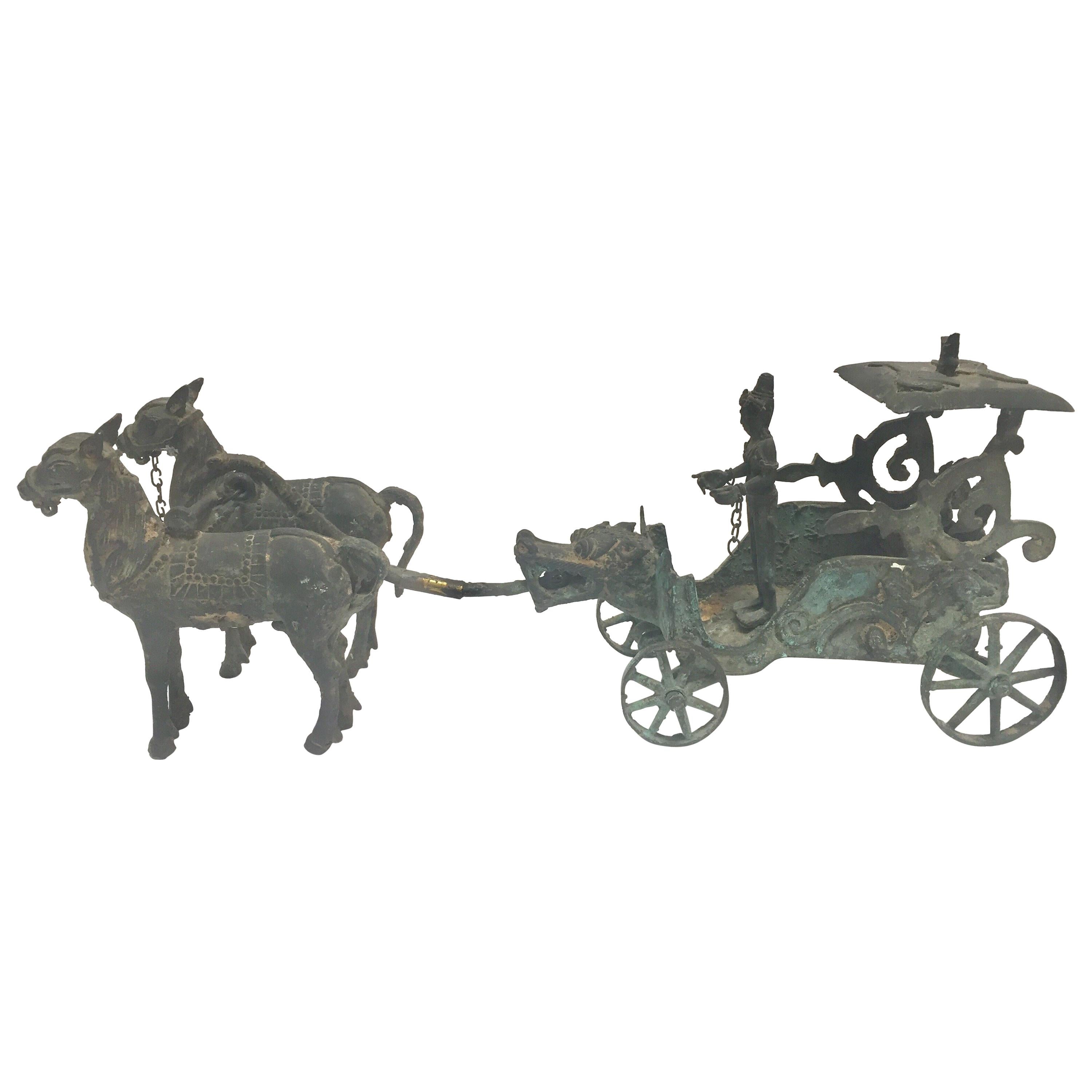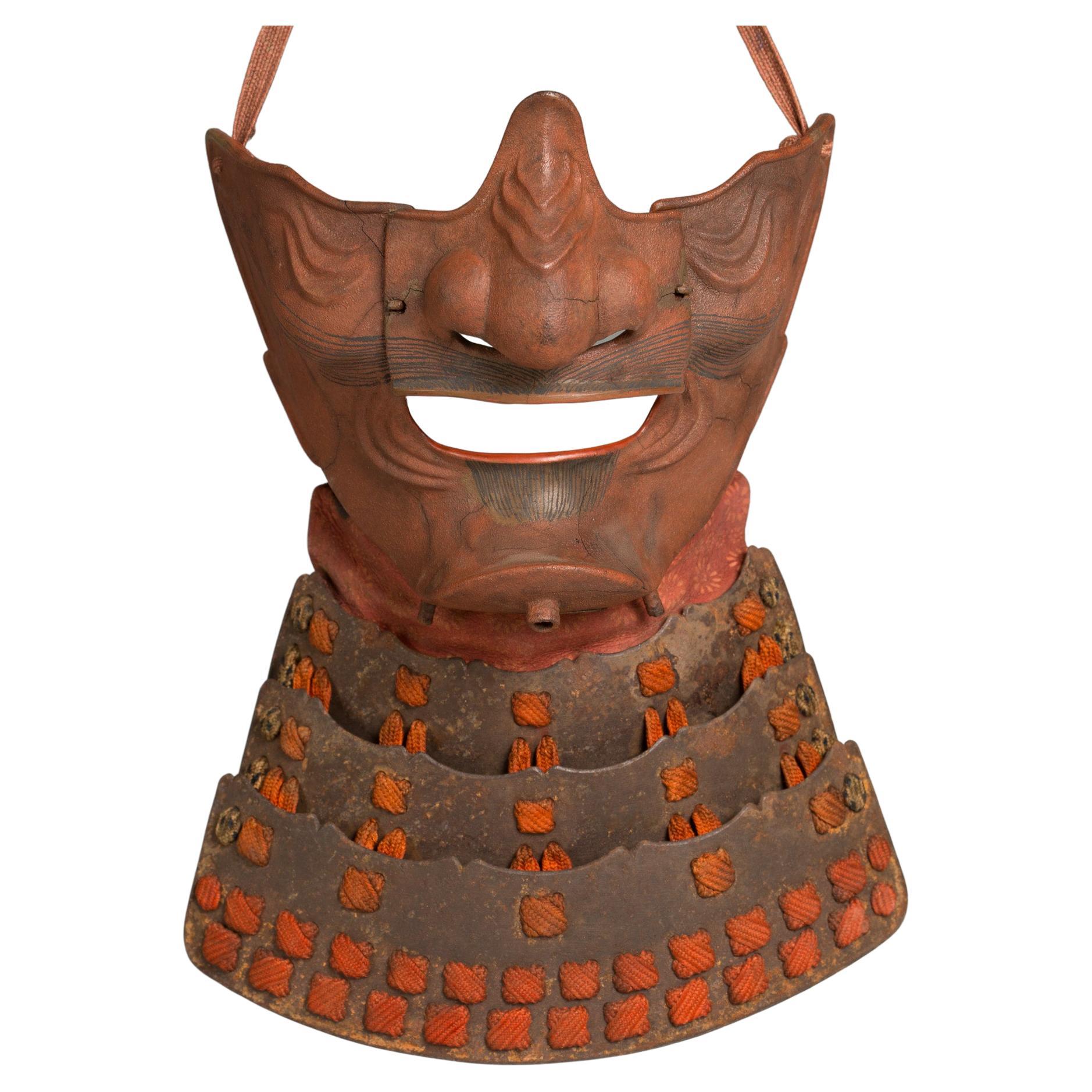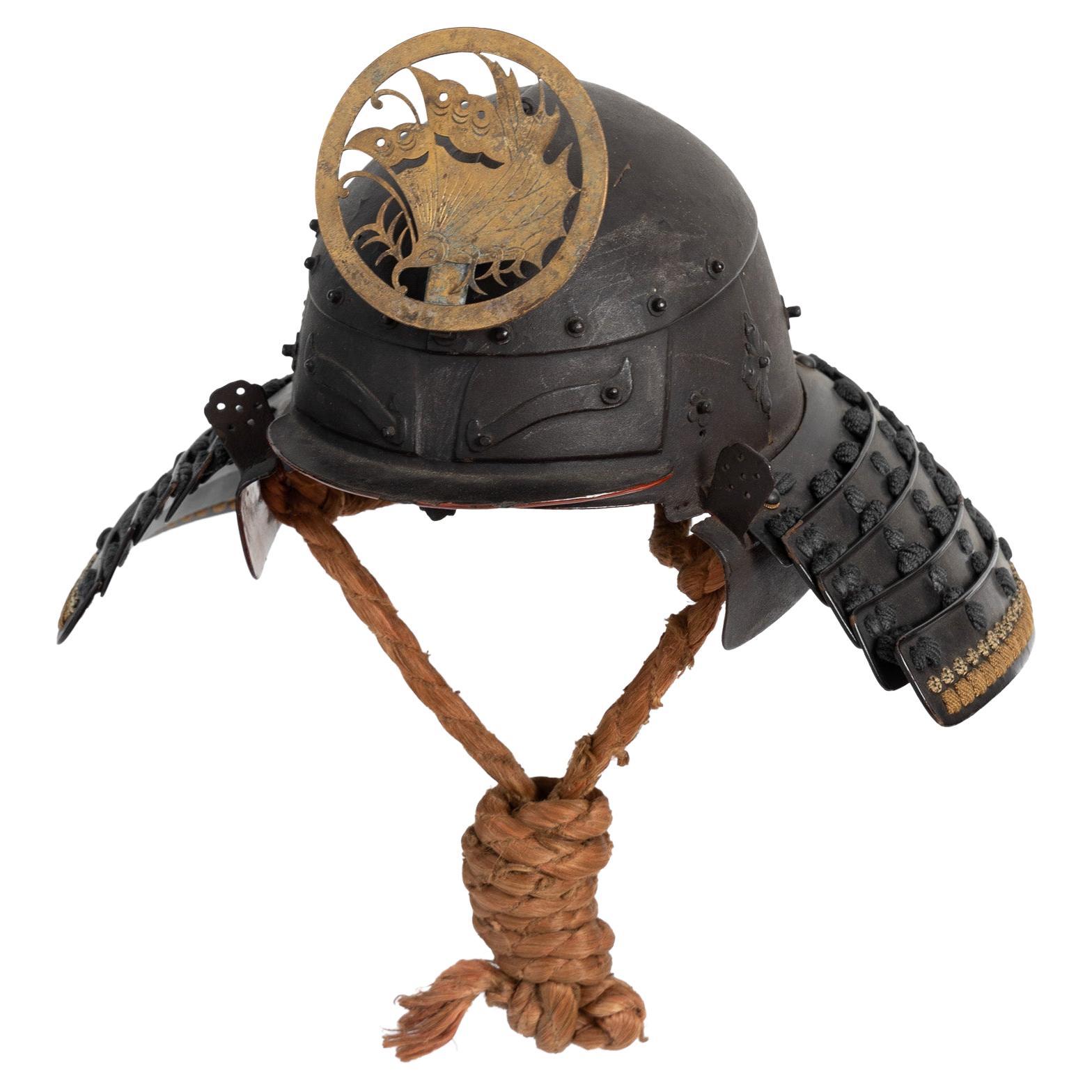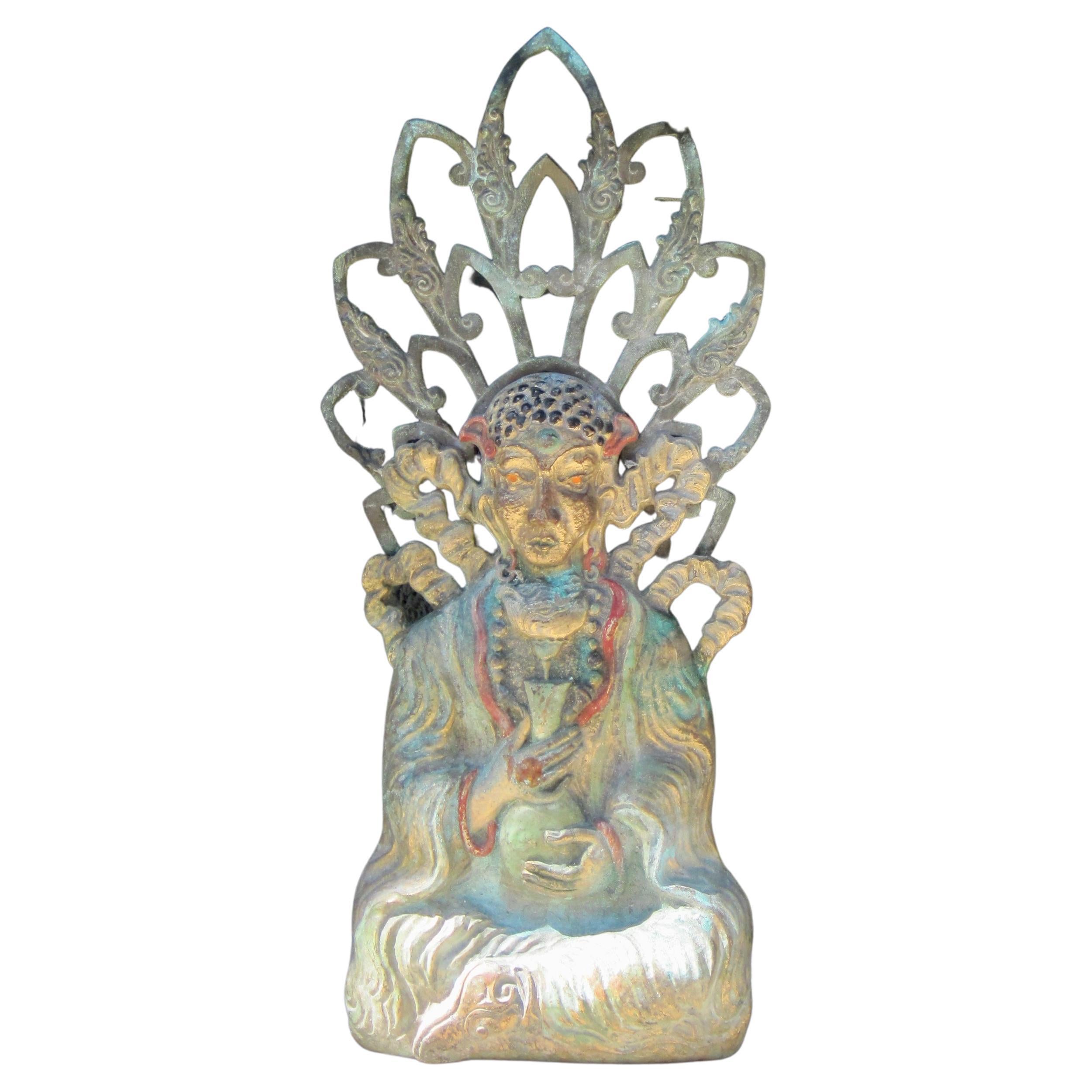Items Similar to Shinto Sunnobi Tanto by Takahashi Naganobu, 1846
Want more images or videos?
Request additional images or videos from the seller
1 of 7
Shinto Sunnobi Tanto by Takahashi Naganobu, 1846
About the Item
A Shinto Sunnobi Tanto
by Takahashi Naganobu, 1846
Unsho Takahashi Naganobu / A lucky day of August Koka san-nen (1846)
Yokota became monk with this sword
-
NBTHK Tokubetsu Hozon Token
-
Published: Yoshihiro Abe, Unsho Tosho Takahashi Tsumbo-shi - Nobunaga no Kenkyu, 1988, pag. 301
-
Nagasa [length]: 33 cm
Motohaba [bottom width]: 3.1 cm
Motokasane [bottom thickness]: 7.4 mm
-
Sugata [configuration]: Hira-zukuri, iori-mune,
Kitae [forging pattern]: Ko-mokume hada mixed to masame and muji-fu
Hamon [tempering pattern]: Gunome choji in nioi deki. Nioiguchi well defined, with ashi and tobiyaki
Boshi [point]: Notarekomi with kaeri.
Nakago [tang]: Ubu, kirijiri, sujikai yasurime; one mekugi-ana
-
Origami [paper]: The blade comes with a Tokubetsu Hozon Token (Sword Particularly Worth of Preserving) certificate issued by the Nihon Bijutsu Token Hozon Kyokai.
Sayagaki [certification on shirasaya]: Inscription by Yoshikawa Kyoen
Born in 1817 and raised under the names Zenzo first and Sezaki Heisuke later, Naganobu became in 1829 a pupil of Fuyuhiro, by whom he was adopted and with whom he worked as the official swordsman of Matsudaira Sadayasu until 1838, when at the very behest of his lord, he moved to Edo to study under Chounsai Tsunatoshi, one of the most renowned swordsmen of the Shinto era. After a few years, in 1841, he then opened his own forge and changed his name to Takahashi Naganobu. He then began working for the Matsue clan in Izumo (Unsho), for whom he forged blades until his death in 1869.
Naganobu's blades are similar to Tsunatoshi's, with imposing and characteristic shapes that, as in this case, hark back to the Bizen tradition. The jigane is soft and occasionally displays masame. His blades are always razor-sharp, and legend has it that one of his swords was used to cut a machine gun during World War II. Naganobu was also active in teaching; his most prominent disciples include Nobuhide, Toshihiro, Nobuyoshi, Nobukazu, Nobukura, Sukenori, and Shimane Shinkai.
The sunnobi-tanto is a tanto that exceeds the maximum size for this type of sword, a shaku (30 cm), by one sun, or 3 cm.
- Dimensions:Height: 13 in (33 cm)Width: 0.3 in (7.4 mm)Depth: 1.23 in (3.1 cm)
- Materials and Techniques:
- Place of Origin:
- Period:
- Date of Manufacture:1846
- Condition:
- Seller Location:Milano, IT
- Reference Number:1stDibs: LU4250230610342
About the Seller
5.0
Recognized Seller
These prestigious sellers are industry leaders and represent the highest echelon for item quality and design.
Established in 2005
1stDibs seller since 2018
10 sales on 1stDibs
Typical response time: 2 hours
- ShippingRetrieving quote...Ships From: Milano, Italy
- Return PolicyA return for this item may be initiated within 7 days of delivery.
More From This SellerView All
- Samurai Mask with a Fierce Expression Ressei MenpoLocated in Milano, ITSamurai mask with a fierce expression Ressei Menpo DATE Edo period (1615 - 1867), 18th century A red lacquered high-level mask, with fierce (res...Category
Antique 18th Century Japanese Metalwork
MaterialsIron
- Okitenugui Kabuto Samurai Helmet Shaped as a Head Towel Saika, Early Edo PeriodLocated in Milano, ITOkitenugui kabuto Samurai helmet shaped as a head towel Saika, early Edo period, 17th century The Haruta armorers who moved to Kii province in the early 17th century, took the name from the village where they worked, Saika, near Wakayama, possibly on request of the local daimyo, Asano Yukinaga, a great armour amateur. Specialised in the construction of plate helmets, they produced mainly two typologies of kabuto: one with six plates covered with a chrysanthemum-shaped plate on top and one shaped as a “head towel”, called okitenugui. The latter type of kabuto employs very heavy plates crafted in a curved manner and was improved in order to make it resistant to firearms. This okitenugui kabuto features some distinctive decorations of the Haruta school, including the application of cut-out iron elements, including eyebrows, washers and lozenge-shaped decorations on the sides. The ring on the top, however, is a rare feature and could be used to hold a small war flag.Category
Antique 17th Century Metalwork
MaterialsIron
- Go-Mai Uchidashi Dō Tosei Gusoku Samurai Armor Decorated with an Embossed RabbitLocated in Milano, ITGo-mai uchidashi do tosei gusoku Samurai armor decorated with an embossed rabbit Edo period, 19th century This samurai armor is complete and original, with consistent elements...Category
Antique 19th Century Japanese Metalwork
MaterialsIron
- Koboshi Kabuto, Samurai Helmet with Standing Rivets Haruta SchoolLocated in Milano, ITKoboshi kabuto Samurai helmet with standing rivets Haruta School Early Edo Period, 17th century A 62-plate koboshi-bachi [helmet bowl with small s...Category
Antique 17th Century Japanese Arms, Armor and Weapons
MaterialsIron
- Japanese Articulated Iron Jizai Okimono of a Lobster by Myochin MuneharuLocated in Milano, ITThis articulated okimono represents a naturalistically rendered lobster, with fully articulated limbs, antennae, body, and tail and comes with an inscribed wood storage box. Signed:...Category
Antique 19th Century Japanese Metalwork
MaterialsIron
- Suji-bachi kabuto and menpo Signed by Myōchin Muneaki and dated 1853Located in Milano, ITSuji-bachi kabuto and menpo Signed by Myōchin Muneaki and dated 1853 Signature: Kaei 6 - Ushidoshi Oshu Nihonmatsu-ju Myōchin Ki (no) Muneaki saku Made in 1853 by Myōchin Ki Muneak...Category
Antique 18th Century and Earlier Metalwork
MaterialsIron
You May Also Like
- Japanese Tanto, 19th cLocated in Stockholm, SEA nicely designed Japanese Tanto with a bone scabbard that has inlays of stones and mother of pearl. Motives of flowers and birds.Category
Antique Late 19th Century Japanese Metalwork
MaterialsIron
- Antique Asian Bronze Chariot with Dragon Head Pulled by HorsesBy RajhastaniLocated in North Hollywood, CAFrom the Ramakien a Thai Ramayana. A scene from Ramakian or Ramayan, the Indian epic Lakshman riding in a chariot along with Rama and Sita sitting in the back. After his victory over Ravana, Sri Rama prepares to leave for Ayodhya, Rama now told Vibheeshan that there was just one more day...Category
Early 20th Century Indian Folk Art Metalwork
MaterialsBronze
- Japanese Shinto Ema Wishing Wooden Plaque with Iron Sickle and SwordLocated in Chiba, JPOld wishing wooden plaque with iron sickle and sword as ‘Ema’ handmade by Japanese blacksmith and dedicated to Shinto shrine to ward off evil spirit and conflagration. approx. 23.7 x...Category
Early 20th Century Japanese Metalwork
MaterialsIron
- Antique Bronze Buddha Goddess Deity FigurineLocated in Ferndale, MII've never seen anything like this before...weathered bronze medicine goddess figurine with orange eyes. Verdigris patina with gold, turquoise and paprika colors throughout. The halo...Category
Early 20th Century Archaistic Religious Items
MaterialsBronze
- 1900s Antique Chinese Export Silver Cigarette BoxLocated in Jesmond, Newcastle Upon TyneA fine and impressive antique solid Chinese Export Silver cigarette box; an addition to our diverse silver box collection This fine antique Chinese Export Silver (CES) cigarette box has a plain rectangular form with rounded corners. The surface of the body of the box is plain with an applied molded border to the rim. The subtly domed hinged cover of the box is ornamented with the contemporary engraved monograph initials ‘CBK’ in addition to a moulded border to the rim. The hallmarks struck to the underside of this impressive box include: Maker's mark: WH (Wang Hing & Company) Silver quality/purity mark: 90 (900/1000) Character mark: Untraced. Note: The majority of such boxes have a wood lining to the interior to provide strength, due to a poor gauge of silver; a sign of quality when examples are unlined and of solid silver. Condition This antique cigarette box...Category
Early 20th Century Cypriot Other Tobacco Accessories
MaterialsSilver
- Indian Jhansi, Bundelkhand Bronze Toy Horse FigureLocated in Bishop's Stortford, HertfordshireA good antique bronze temple horse on wheels toy originating from Jhansi City in Bundelkhand in Northern India and dating from the 19th century. The Hindu region of Bundelkhand is we...Category
Antique 19th Century Indian Anglo-Indian Metalwork
MaterialsBronze
